Space
Sign up for our newsletter
We summarize the week's scientific breakthroughs every Thursday.
-
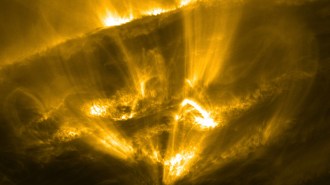 Astronomy
AstronomyCoronal rain has been seen splashing on the sun
New images of the solar corona, taken by the Solar Orbiter probe, reveal bright fireball effects and upwelling induced by falling plasma droplets.
-
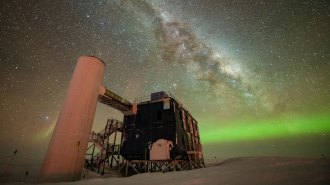 Physics
PhysicsNeutrinos offer a new view of the Milky Way
Physicists turned to AI to help map out the newfound origins of ghostly neutrino particles coming from deep in the Milky Way.
-
 Astronomy
AstronomyA newfound gravitational wave ‘hum’ may be from the universe’s biggest black holes
Scientists reported evidence for a new class of gravitational waves, likely created by merging supermassive black holes.
-
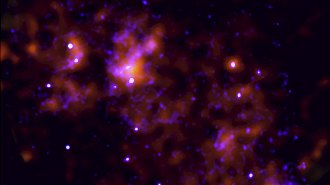 Astronomy
Astronomy200 years ago, the Milky Way’s central black hole briefly awoke
The black hole is thought to be mostly quiet and dim. Now, glowing cosmic clouds have revealed the behemoth’s last flare.
-
 Physics
PhysicsJulian Muñoz has a ‘ruler’ that could size up the early universe
The measurement tool could lay out a distance scale for cosmic dawn —and offer clues to the nature of dark matter.
-
 Astronomy
Astronomy50 years ago, a search for proof that the Maya tracked comets came up short
The mystery of whether the ancient civilization tracked comets endures, but recent evidence hints the Maya tracked related meteor showers.
-
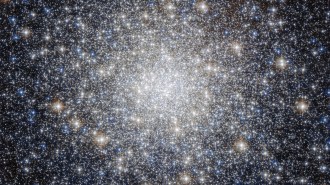 Astronomy
AstronomyA star cluster in the Milky Way appears to be as old as the universe
Globular cluster M92 is about 13.8 billion years old, a new calculation suggests. Getting the age right could help resolve a bigger cosmic conundrum.
-
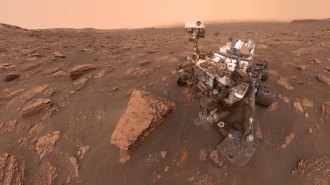 Astronomy
Astronomy‘Under Alien Skies’ imagines what the sky looks like on other planets
Astronomer Philip Plait’s new book takes readers on a thrilling ride to Mars, Pluto and even a black hole.
-
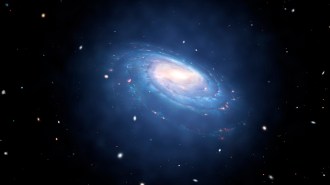 Astronomy
AstronomyAlien life may be possible even at the Milky Way’s edges
Phosphorus detected far from the Milky Way’s center seems to extend the zone where life could exist in the galaxy by thousands of light-years.
By Bas den Hond -
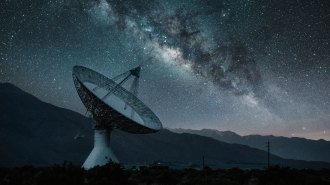 Math
MathHere’s how we could begin decoding an alien message using math
A new mathematical approach looks for order in strings of bits – without relying on human assumptions.
-
 Astronomy
AstronomyIn a first, JWST detected starlight from distant galaxies with quasars
Until JWST’s sharp infrared eyes came along, it wasn’t possible to see the galaxies hosting extremely bright supermassive black holes called quasars.
-
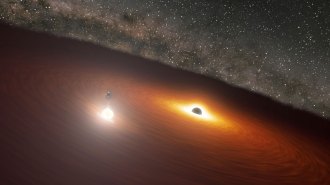 Astronomy
AstronomyA supermassive black hole orbiting a bigger one revealed itself with a flash
A supermassive black hole binary system has puzzled astronomers for decades. Now they’ve finally seen direct signals from the smaller of the two.